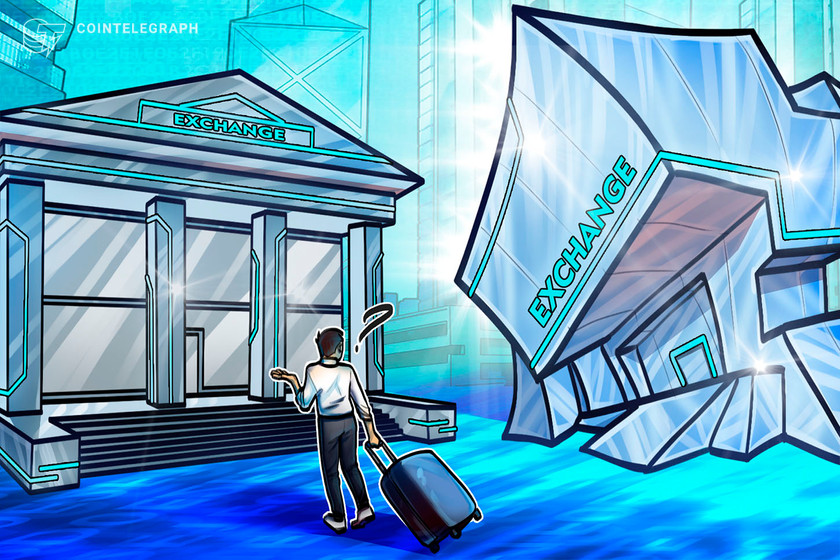Success in DEX? Fast-growing crypto exchanges may hurt DeFi investors

As DEXs continue to accrue billions of dollars in TVL within days of their launch, some question whether they are manipulating their numbers.
With the rise of various meme-coins over the last year or so, a whole host of decentralized exchanges (DEXs) have continued to emerge and accrue massive sums of liquidity seemingly overnight. As a result, a number of security firms have started to call into question over the recent weeks regarding the overall security and transparency of these platforms.
For example, DEX ShibaSwap, which has been able to capitalize on the budding popularity of the style of Dogecoin (DOGE) with native token Shiba Inu (SHIB), was recently able to accrue a total value locked (TVL) of more than $1 billion within a day of its launch. This calls into question the DEX’s liquidity quotient, especially since the protocol’s design was given low marks by platform reviewer DeFi Safety.
The firm initially scored ShibaSwap’s native safety and security standards at a mere 3%, which is well below the platform’s minimum pass threshold of 70%. However, following an audit by Certik, a firm that has previously worked with others in the industry like Neo, Crypto.com and Ontology, DeFi Safety bumped up ShibaSwap’s score to 35%.
Solidity developer Joseph Schiarizzi recently issued a stern warning regarding the staking contracts of such untested platforms, a concern that was also reiterated by DeFi Watch analyst Chris Blec.
Blec stated that, if, for example, the migrate function of ShibaSwap’s smart contract is still under the control of a single individual, there is a possibility that the owner of the contract could choose to initiate a new “migration function,” allowing them to gain complete control of the platform’s token pool.
Users beware
To gain a better understanding of the safety — or lack thereof — of some of these new DEXs, Cointelegraph reached out to Red, a community moderator for the decentralized yield farming aggregator Harvest Finance. In his view, ever since the inception of initial coin offerings — and now yield farming — a whole bunch of newly launched projects has seemingly acquired the ability to mint tokens out of thin air and create market value, simply with promises and hype but very little substance, adding:
“Recently, the DeFi space has seen multiple DEXs spring up, promising to be the next best protocol and offering huge amounts of rewards in tokens in return for liquidity, but as we have also recently seen, the space is plagued with scams and ‘rug pulls’ which lure people in with promises only to steal their funds and leave behind worthless tokens.”
Without speaking directly about any project, Red stated that whenever a flood of money enters any protocol too quickly, it usually suggests that very little due diligence has been done by its users. “Even if the developers’ intentions were good, a bug in any quickly deployed code can affect everyone badly,” he said.
Antoni Trenchev, the co-managing partner of digital assets lending platform Nexo, told Cointelegraph that there are two key ways to gauge the security of automated money makers and DEXs:
“In case the contract is a fork of a more established platform such as Uniswap, you need to look at whether there are any modifications to the contract. Secondly, how battle-tested and established is the original contract? Often, these are easily verifiable by smart contract-savvy tech users, but the process varies greatly for everyday users.”
Are DEXs artificially inflating their TVL figures?
Individuals who provide liquidity to a platform are usually rewarded with handsome token-based incentives. According to Trenchev, this operational model has been a potent tool for many developers to share their success with their backers and users. He added that thanks to the pioneering efforts of lending protocols such as Compound, this method has been able to attract large capital inflows.
That said, an increasing number of users in recent months have become concerned simply with the incentive side of things, withdrawing their assets soon after their rewards have been issued. “Teams can attract liquidity, but in the long-term, the only way to retain it would be through building sustainable products, services and experiences that people want,” Trenchev stated.
Providing his insights on the contentious topic of artificial TVL inflation, Ross Middleton, co-founder and chief financial officer for DeversiFi, a layer-two decentralized finance (DeFi) trading platform, told Cointelegraph that low-cost DEXs do possess the ability to artificially inflate their volumes since there is very little economic cost to trading, stating:
“Since ShibaSwap is based on Ethereum, traders are still paying gas fees to swap and therefore the swap volume is likely real. Swap volume can also be driven by traders swapping tokens in order to obtain the correct ratios of tokens needed to provide liquidity to the DEX and earn liquidity mining rewards.”
In Middleton’s view, the real test for ShibaSwap will be whether or not it can maintain its current trading volumes over a longer time window, especially as the protocol’s mining rewards continue to dry up.
That said, he did concede that since ShibaSwap has been able to forge a solid brand name for itself — with its backing community rumored to be 300,000 strong — people may actually be bullish on the project, albeit temporarily. However, the lack of liquidity draining from Uniswap suggests to Middleton that ShibaSwap may not have been able to win the hearts and minds of Ethereans just yet.
Long-term testing is a must
While from a security standpoint, ShibaSwap has been built on Ethereum, therefore, its liquidity providers (LPs) are not exposed to the underlying security risks that face side chains or centralized blockchains. However, the fact still remains that such ecosystems have yet to be battle-tested.
In Trenchev’s opinion, the smart contracts of budding DEXs related to coins like DOGE and SHIB really need to stand the test of time before investors start pouring their money into them. “It is nice to see an audit from Certik, but audits do not catch everything and therefore, LPs should be cautious,” he pointed out.
Thus, it will be interesting to see how this space continues to evolve, especially as the DeFi market garners an increasing amount of mainstream traction thanks to Ethereum’s recent and upcoming upgrades.



